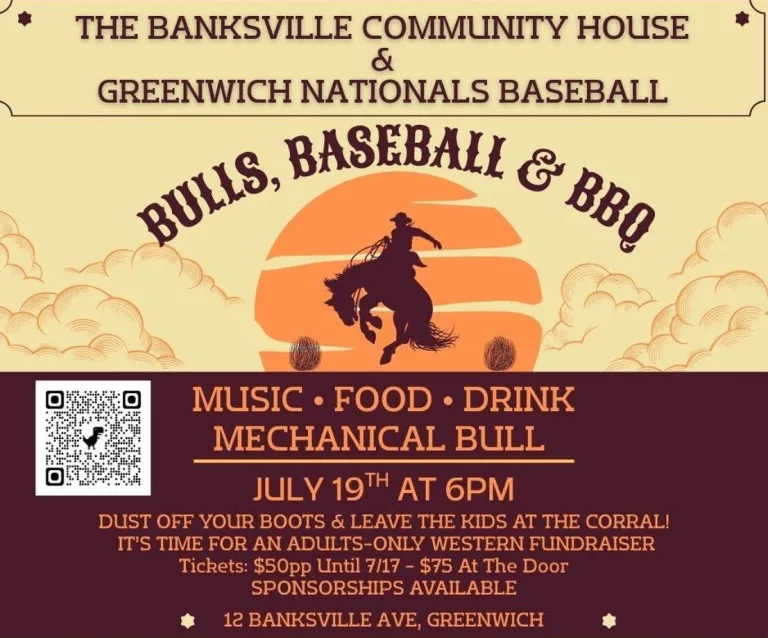
By Mark Pruner
Saving historic Greenwich is a challenge. High real estate prices and changing tastes have resulted in the loss of many historic buildings in Greenwich. We recently lost Hobby Horse Farm in mid-country and the Lockwood House on Lockwood Avenue in Old Greenwich. Both of these were great old houses that epitomized their eras. On the flip side, the downtown Greenwich Post Office was saved as was the oldest house in Greenwich, the Feake-Ferris House on Shore Road in Old Greenwich. This house was actually built in the 1600s and much of the original house still survived hidden within present structure.
To encourage historic preservation the Greenwich Planning & Zoning Commission passed an improved Historic Overlay Regulation in February 2018. This regulation has incentives to preserve our historic homes and streetscapes by allowing additional units, increased floor area ratio and more flexible uses of historic properties.
The question is can this regulation save an iconic stretch of the Post Road in the heart of Greenwich. Just east of the present Putnam Hill Historic District on the Post Road, there are three houses all built over 100 years ago where Hillside Road that goes to the high school meets the Post Road.
The western part of this section of the Post Road is already in the Putnam Hill Historic District and is designated a historic streetscape in the present Plan of Conservation and Development. Recently, the Greenwich Historic Preservation Network has proposed extending this historic district to Indian Field Road for the 2019 POCD. This area is one of the key areas that gives Greenwich its historic feel. It is seen by thousands of people every day who travel on the Post Road and is a gateway for Greenwich visitors coming off of I-95 and going to the high school or west on the Post Road.
What’s at stake are 3 Hillside Road, which is plaqued as a Historic Home by the Greenwich Historical Society, 505 E. Putnam Avenue and 515 E. Putnam Avenue, also known as 5 Brookridge Road. More importantly it’s the whole streetscape, preserving the context and the look and feel of this area of Greenwich for the next century and beyond. All of these houses were built around 1909 and they could all be gone by the end of 2019.
As you might expect, the owners were all substantial citizens of Greenwich when the houses were built. The house at 505 E. Putnam was built by Frederick G. C. Smith who was the architect for the Armory on Mason St. in downtown Greenwich, across from the firehouse. Frederick Smith also likely designed 515 E. Putnam Avenue, which was built for Smith’s father-in-law. This house at also was later owned by Julius Cahn, a major theater manager in NYC. The house at 3 Hillside Road original owner was J. Edward Sidway, whose name appears on the historic plaque.
I know how hard these historic homes on the Post Road are to sell in today’s market as several years ago I listed both 505 E. Putnam Ave and 3 Hillside Road with no takers. No one was interested in taking on these projects as single-family homes. We were however approached about large commercial opportunities such as a 100-bed memory care centers. At that time there wasn’t a good solution for preserving these houses.
The answer to preserving this group of houses and the historic streetscape is a historic preservation technique called “adaptive reuse”. Houses cannot be museums, they need to work for the way that families live today and for the next 100 years. It would be cool if you could preserve houses as a time capsule, but they need modernized features reflecting today’s lifestyle changes, if you want to preserve them. The good thing is that the houses’ exteriors can be preserved for the owners and the public. Preserving grand houses on large lots fits perfectly with what the town’s Historic Overlay regulation seeks to encourage.
Chris Franco, who helped save the aforementioned Ferris-Feake house in Old Greenwich as well as the Innis Arden Cottage and The Old Barn on Greenwich Point, among others, and Marc Johnson, who also has concluded several historic restoration projects, have proposed an adaptive reuse project called Milbrook Crossing to preserve and even expand this historic area on the Post Road. The streetscape will be preserved and enhanced, with the houses renovated and repurposed all as per the new historic overlay regulation. A permanent easement will preserve the exterior and the streetscape that the public sees forever.
The HO Reg provides several incentives to preserve historic areas. It allows bonus units or more square footage (FAR). The HO regulation also permits office use for properties, if like Milbrook Crossing they are within 1000 feet of a local business zone, but Milbrook Crossing will be an all residential project. Each house will also have additions that will be “subordinate” to the houses as required by the HO Reg. The additions will be well screened, and will look carriage houses, barns, a lodge and a stable.
The project will have a total of 6 acres including 7 Hillside Road which was subdivided from 3 Hillside in 1961. That house incorporates part of the original carriage house for 3 Hillside Road and the new structure at 7 Hillside will restore that look. The additions to the other houses will be shielded from street view by the present houses. In total, square footage of all the units will be 10% less than the FAR allowed for the present zoning and 25% less than the FAR allowed with the HO bonus.
Over the expanse of these four properties and their six acres, there will a total of 22 units, but they have been carefully designed leaving most of the land as open space and preserving the beautiful old growth trees on the properties. The way Chris kept more open space to preserve the historic feel, while also not maxing out the FAR, was to keep the units smaller. The result is that they will also be more reasonably priced.
The thing I like about this project is that the developer’s primary interest, and his passion, is historic preservation. I met him through our mutual memberships on the Greenwich Historic Preservation Network, an umbrella group of organizations interested in preserving Greenwich’s history. I’ve had a little input into the design and am excited that this is a viable way to preserve the historic look of this area. A couple of years ago it was looking like these houses would all be teardowns.
Planning and Zoning is to be applauded for passing the historic overlay regulation, now it’s up to them as to whether the application of this reg will actually preserve Greenwich’s history.
Mark is an award-winning agent with Berkshire Hathaway. He can be reached at 203-969-7900 and mark@bhhsne.com





